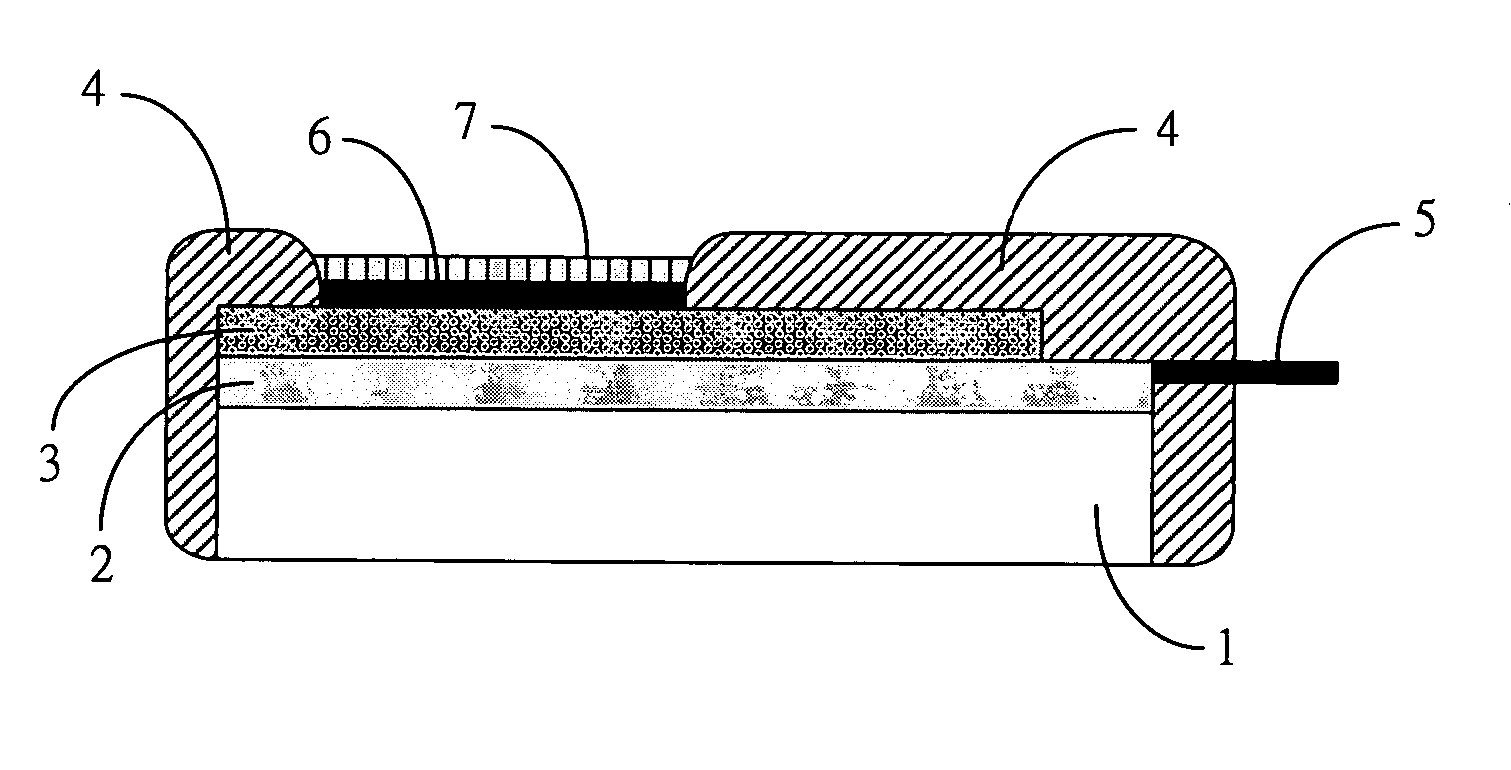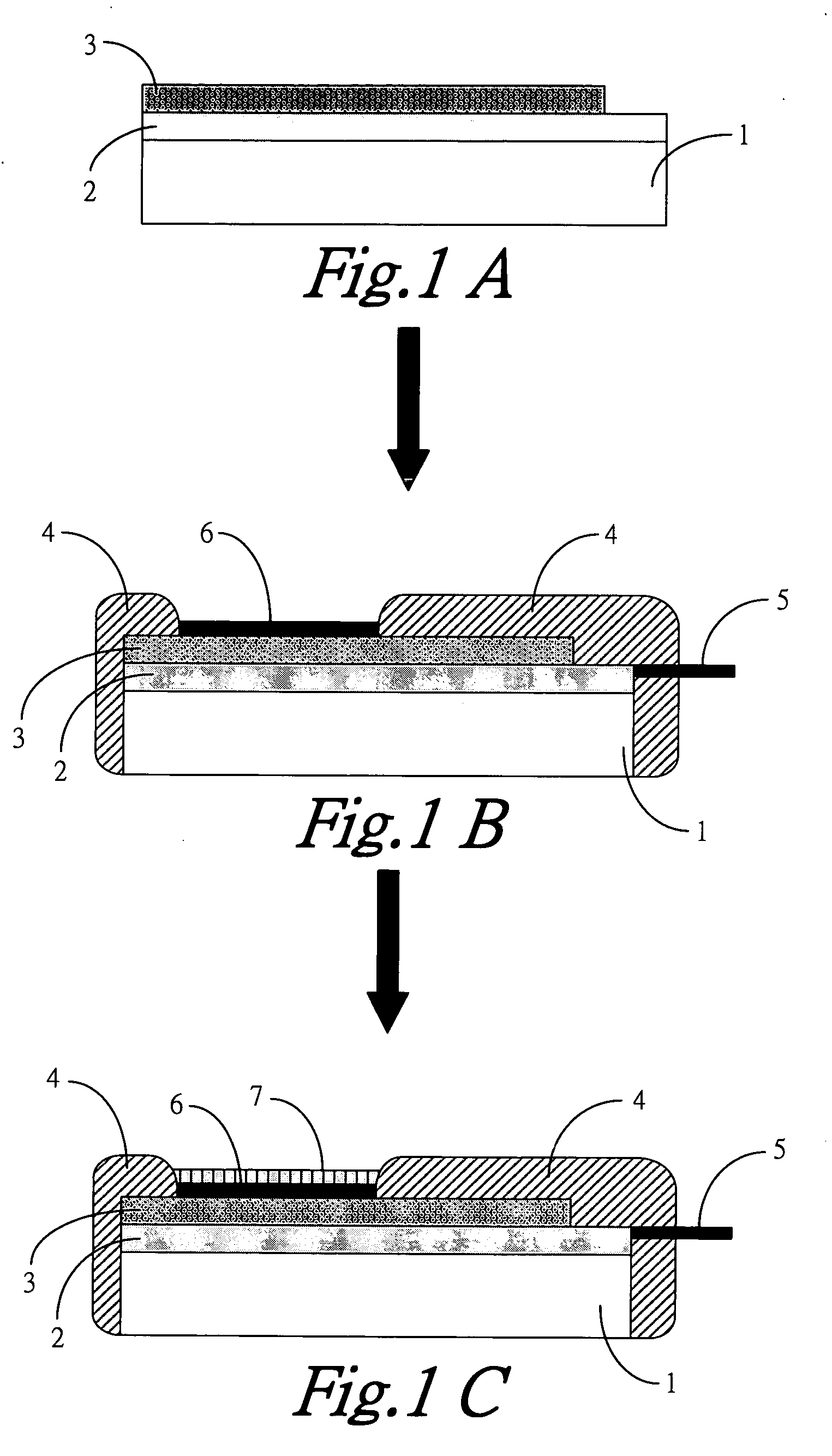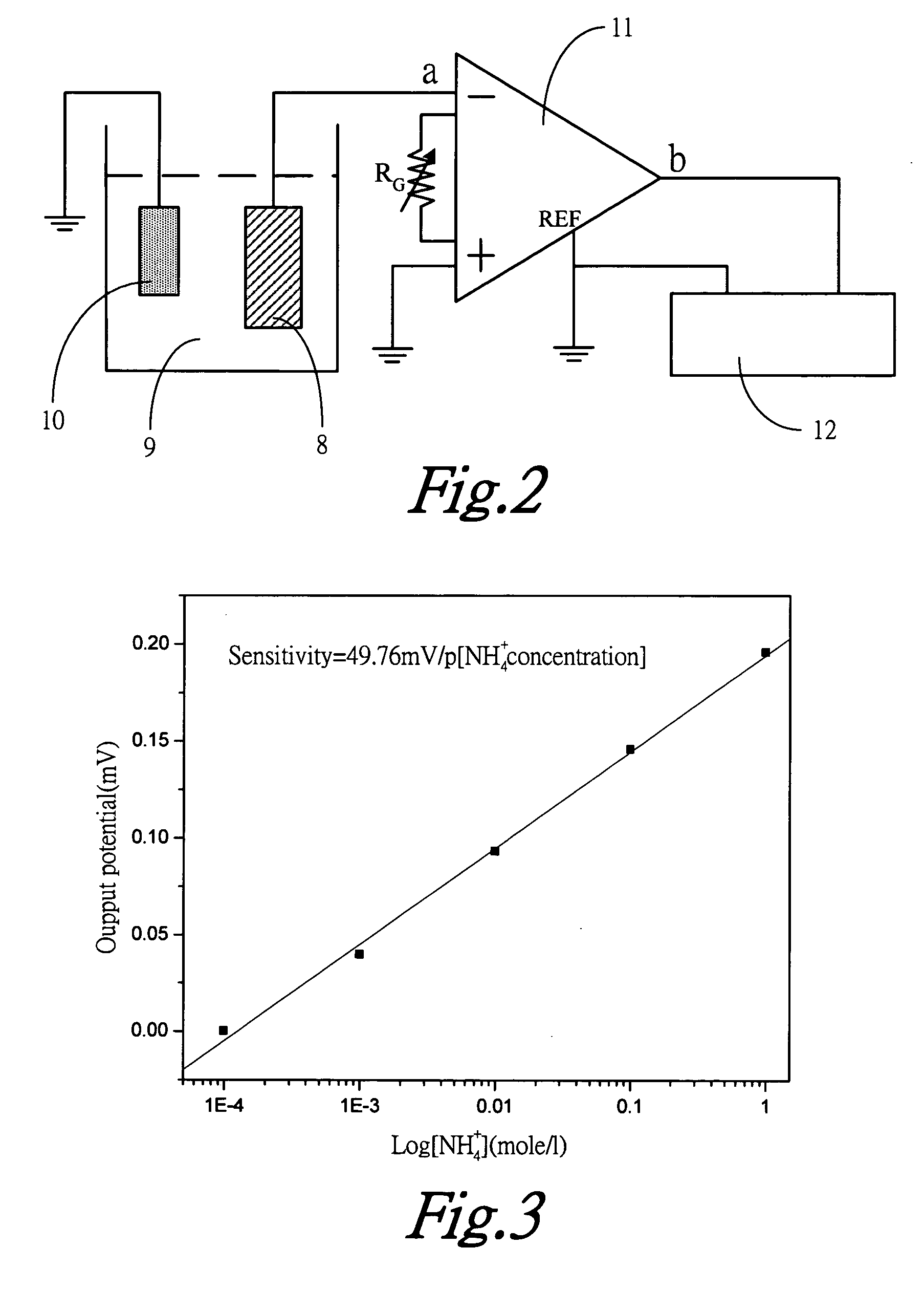Potentiometric urea sensor based on ion-selective electrode
- Summary
- Abstract
- Description
- Claims
- Application Information
AI Technical Summary
Benefits of technology
Problems solved by technology
Method used
Image
Examples
example 1
(1) Example 1
[0025] As shown in FIG. 1A, a schematic process for a potentiometric urea sensor made by a ammonium ion-selective electrode, in which a tin dioxide (SnO2) film 3 with thickness about 2000 Å is sputtered on a substrate containing a glass layer 1 and a tin dioxide layer 2 to entirely form a solid-state pH ion sensing electrode for detecting the pH value in a solution. The above substrate also can be a single layer substrate, such as ceramic substrate, glass substrate, etc, on which a SnO2 film is sputtered directly and a conductive line is fixed on said SnO2 film.
[0026] As shown in FIG. 1B, using a silver paste, a conductive line 5 is adhered to an end of the above SnO2 layer 2 uncovered by SnO2 film 3 as a transmission line of the sensing signal and is packaged by an epoxy resin 4. The packaging also forms a 2×2 mm2 sensing window as a sensing region, thus complete the packaging of the solid-state pH ion sensing electrode. After packaging, an ammonium ion-selective memb...
example 2
(2) Example 2
[0031] As shown in FIG. 2, a measurement circuit for a potentiometric urea sensor, in which the readout circuit is a instrumentation amplifier 11, the urea sensor 8 placed in a buffer solution 9 for urea measurement is connected to the negative input a of the instrumentation amplifier, while a silver / chloride silver electrode 10 correspondingly provides a reference stable potential, so as to measure the response potential of the sensor. The output end b of the instrumentation amplifier 11 is connected to a multi-function digital meter 12.
[0032] The way to use the potentiometric urea sensor includes following steps:
[0033] Step 1, using an instrumentation amplifier as the readout circuit of the potentiometric urea sensor;
[0034] Step 2, placing and stabilizing the potentiometric urea sensor into a buffer solution before measurement, and using the stabilized response potential as the reference potential;
[0035] Step 3, placing the potentiometric urea sensor into a soluti...
example 3
(3) Example 3
[0036]FIG. 3 is a linear calibration curve of a response potential, measured by an ammonium ion-selective electrode while the ammonium concentration ranging from 0.1 mmole / l to 1 mole / l, using the measurement circuit shown in FIG. 2. The sensitive characteristic of the ammonium ion-selective electrode is measured while the ammonium concentration ranging from 0.1 mmole / l to 1 mole / l, and via the calculation of the linear calibration curve of the response potential, to ensure the sensitivity of the device locate within a stable range.
PUM
| Property | Measurement | Unit |
|---|---|---|
| Fraction | aaaaa | aaaaa |
| Fraction | aaaaa | aaaaa |
| Fraction | aaaaa | aaaaa |
Abstract
Description
Claims
Application Information
 Login to View More
Login to View More - R&D
- Intellectual Property
- Life Sciences
- Materials
- Tech Scout
- Unparalleled Data Quality
- Higher Quality Content
- 60% Fewer Hallucinations
Browse by: Latest US Patents, China's latest patents, Technical Efficacy Thesaurus, Application Domain, Technology Topic, Popular Technical Reports.
© 2025 PatSnap. All rights reserved.Legal|Privacy policy|Modern Slavery Act Transparency Statement|Sitemap|About US| Contact US: help@patsnap.com



